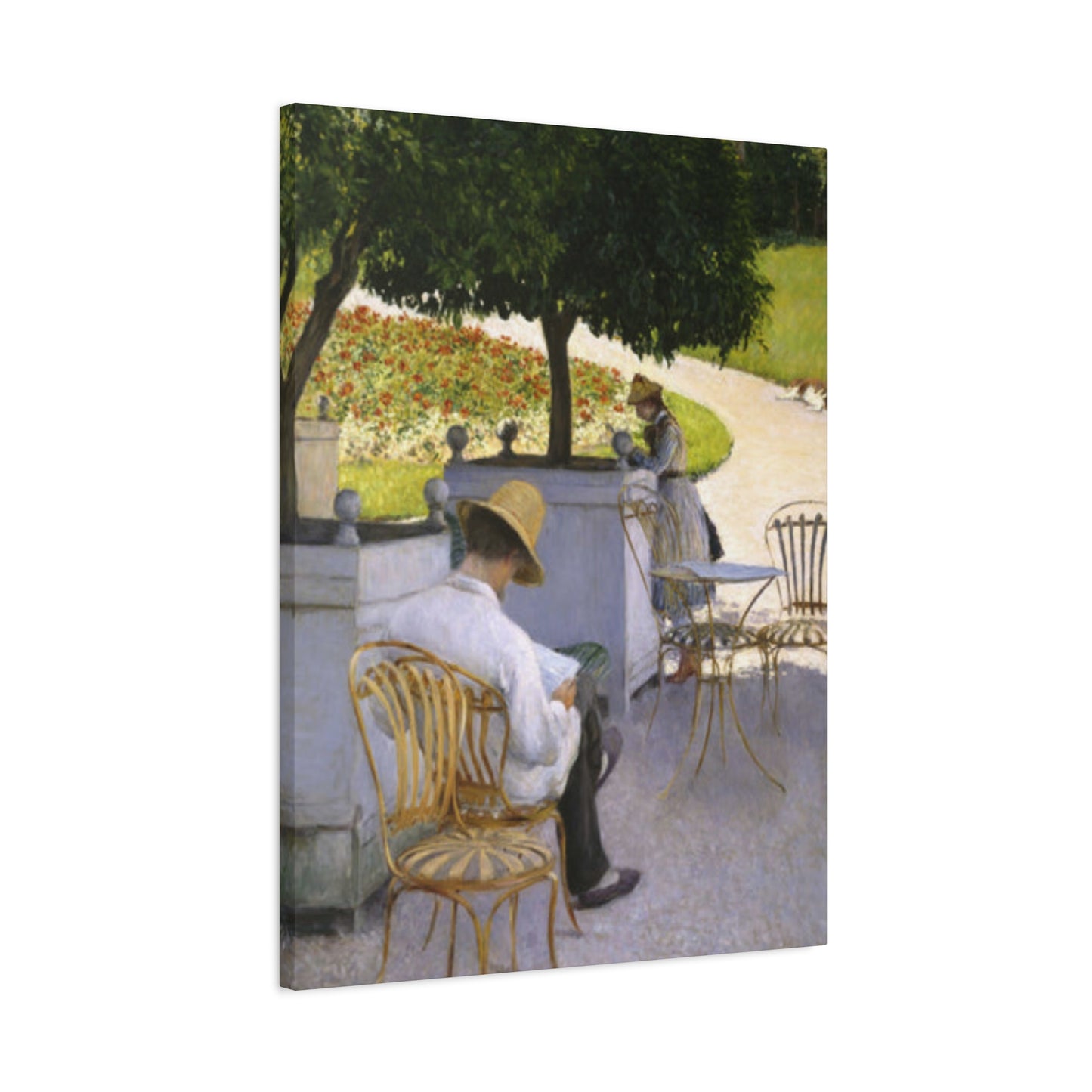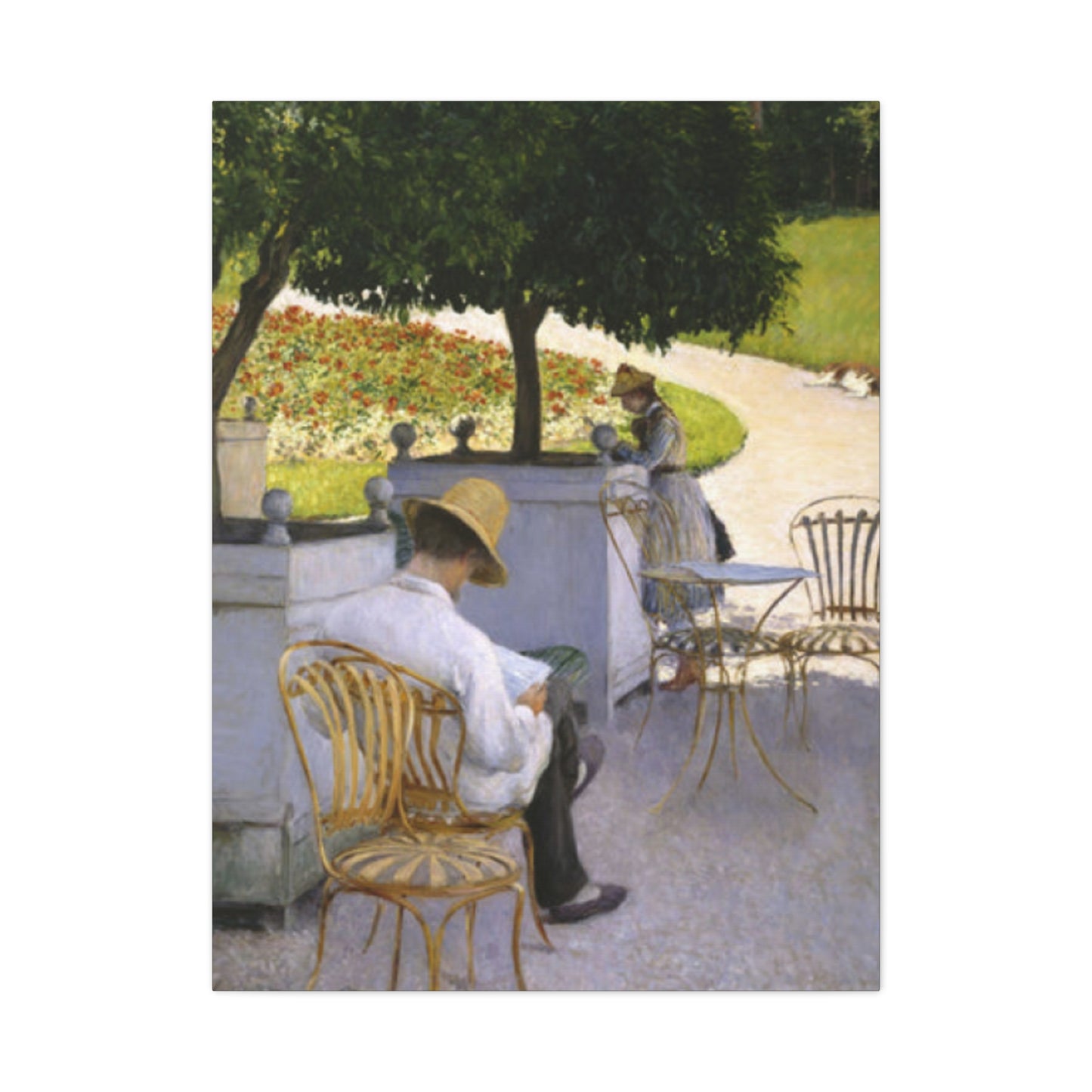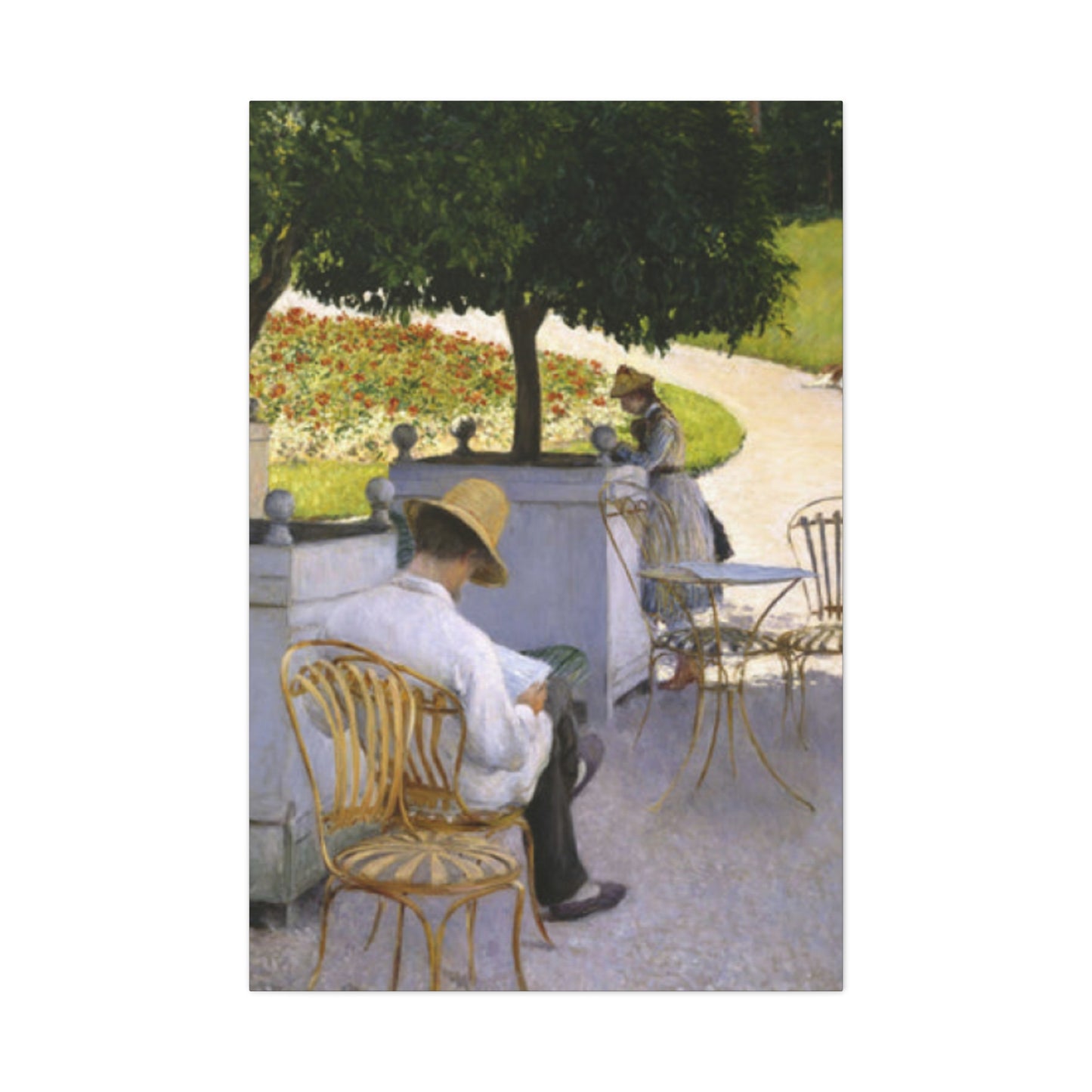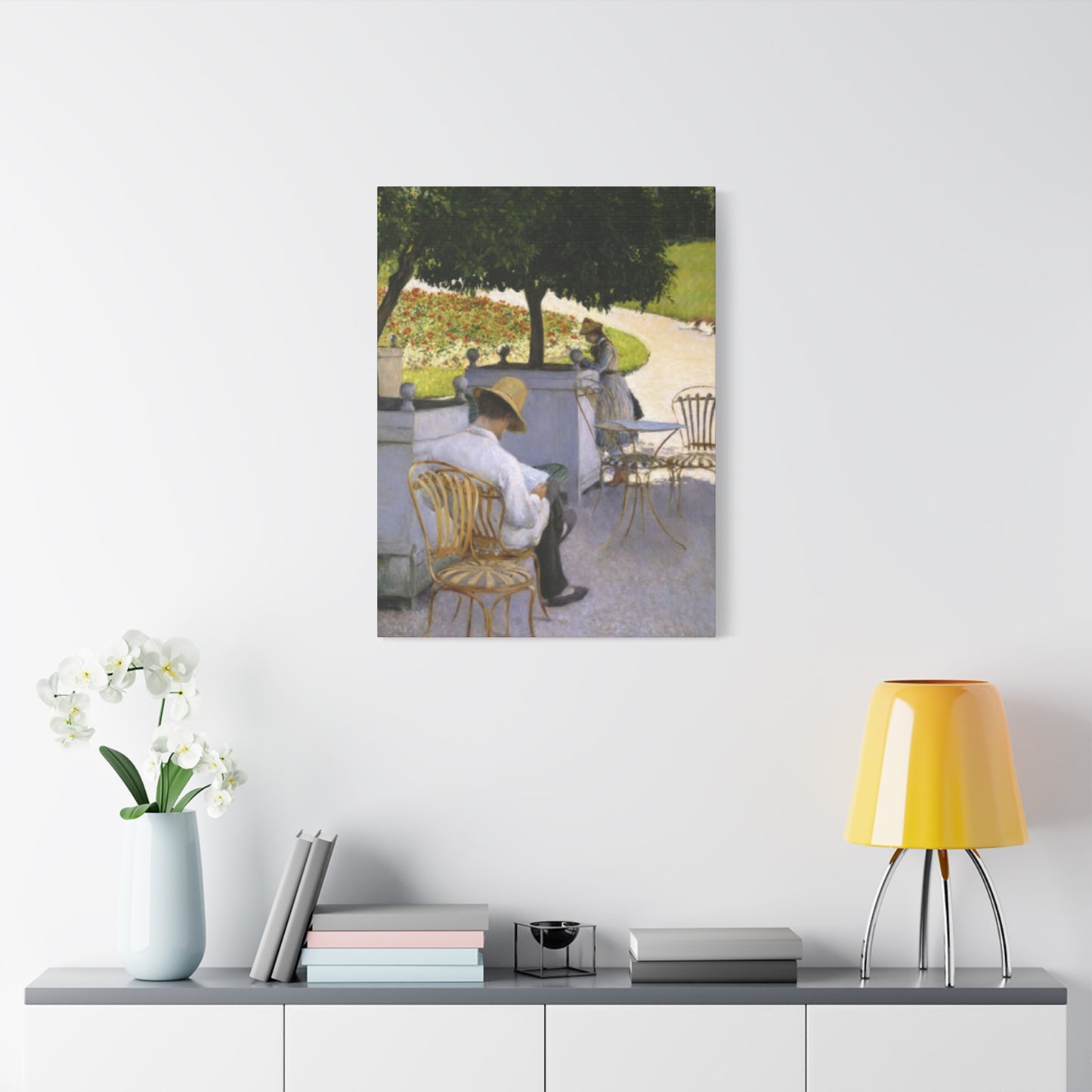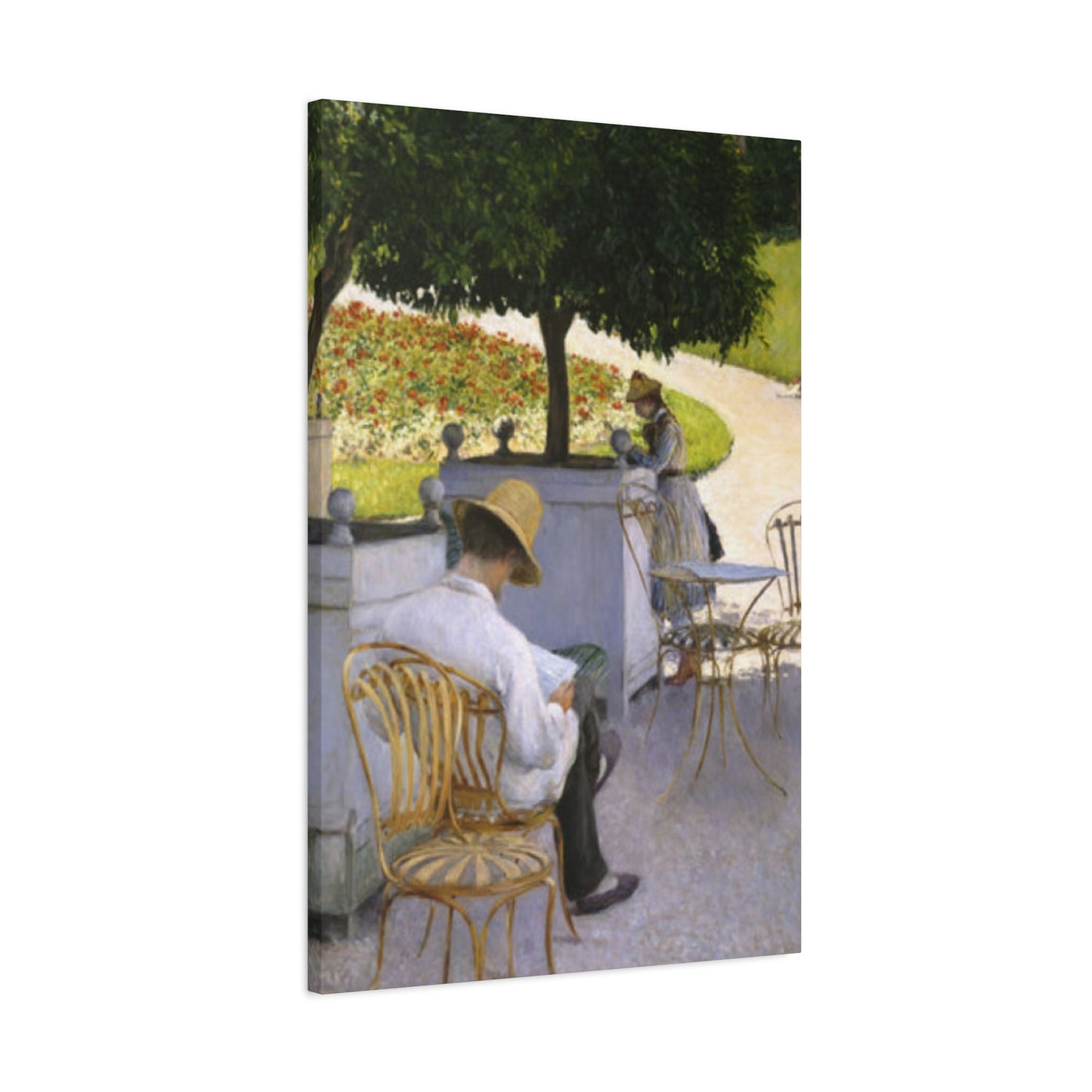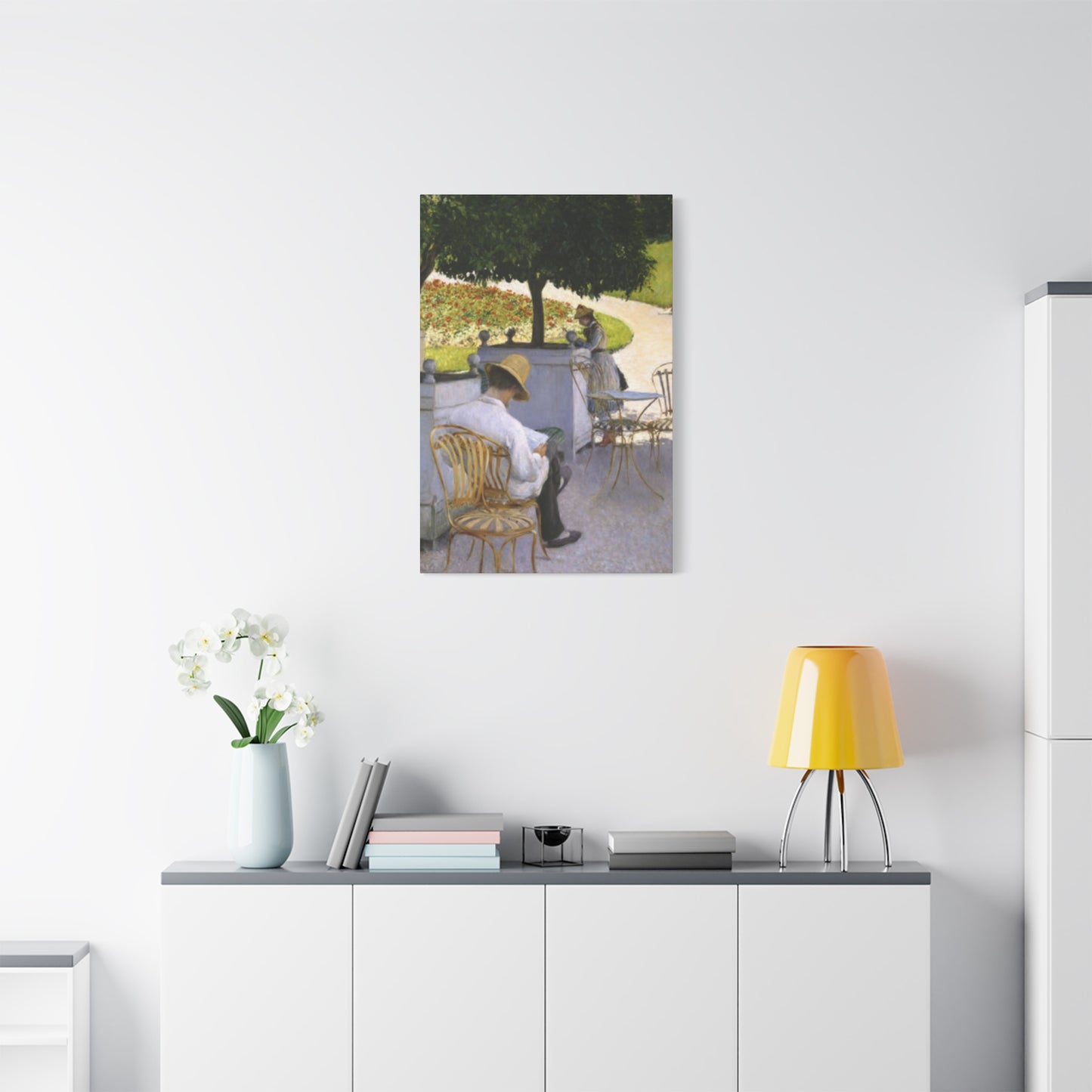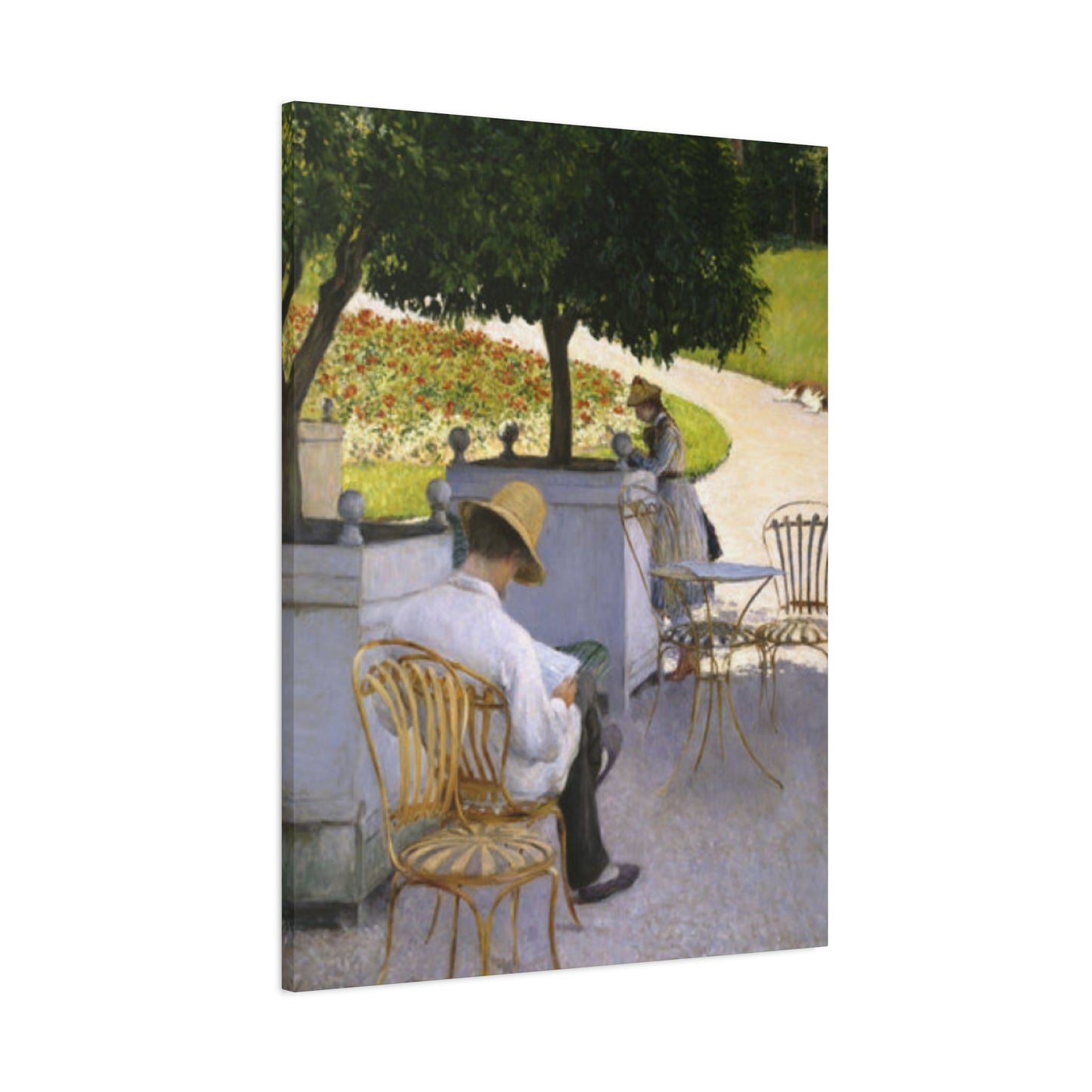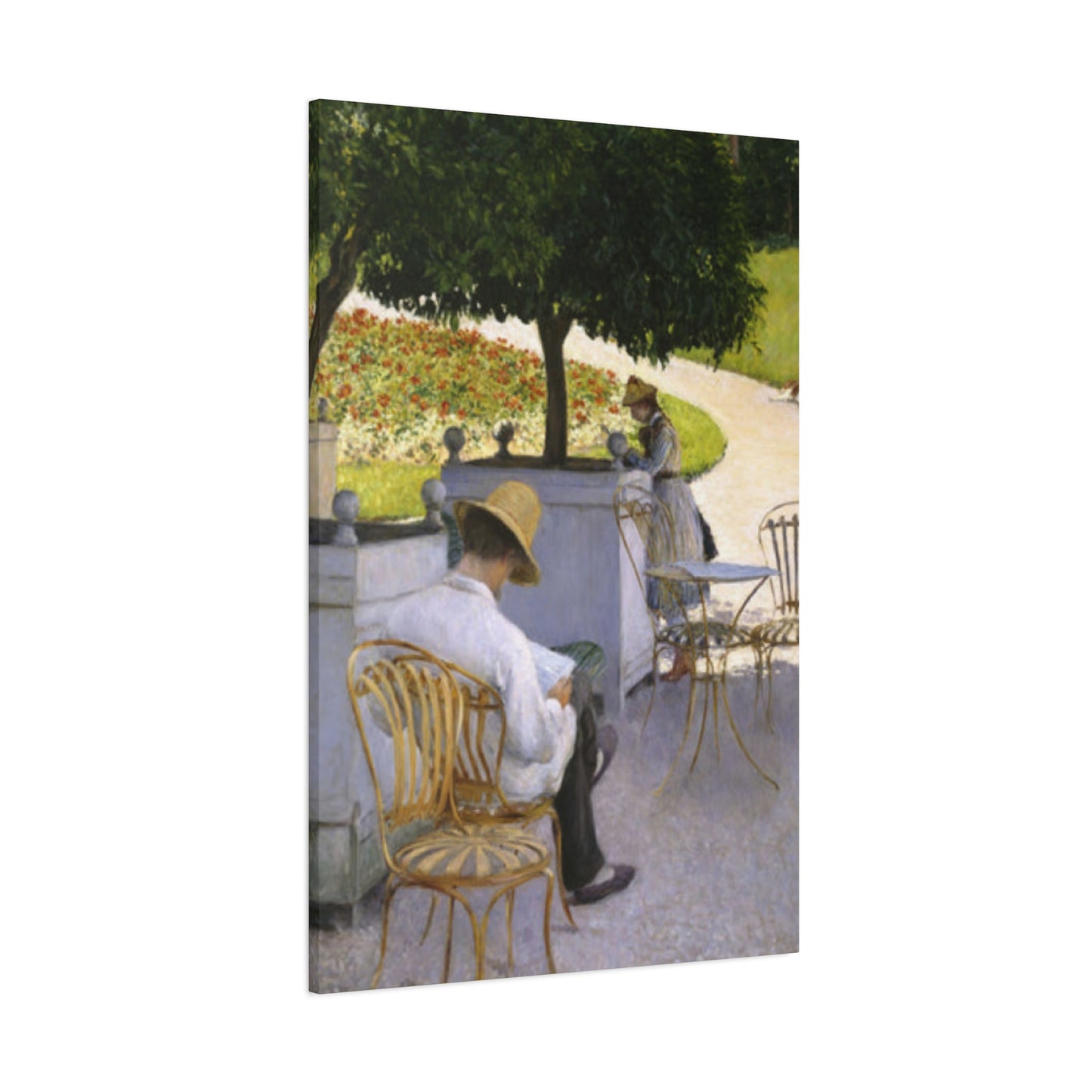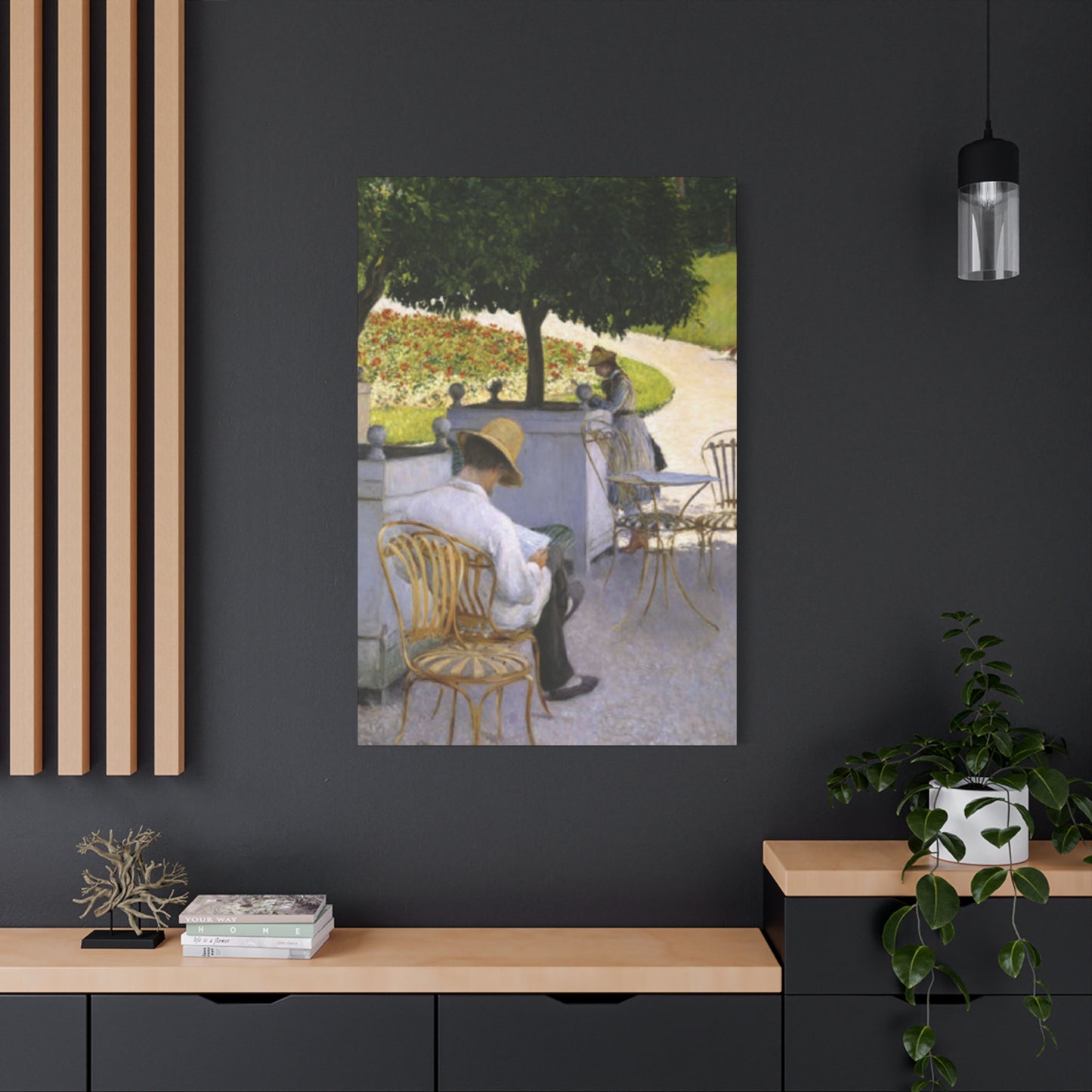Gustav Painting Wall Art: Masterpieces That Transform Your Home
Gustav Klimt's extraordinary artistic legacy continues to captivate art enthusiasts worldwide, and canvas prints offer an accessible way to bring his magnificent creations into contemporary homes. The Austrian symbolist painter's distinctive style, characterized by elaborate patterns, shimmering gold leaf, and sensual figures, translates beautifully onto canvas medium. Canvas wall art featuring Gustav's masterpieces provides homeowners with museum-quality reproductions that capture the essence and brilliance of the original works while remaining budget-friendly and versatile for various decorating schemes.
The appeal of Gustav canvas wall art extends beyond mere decoration; these pieces serve as conversation starters, focal points, and sources of daily inspiration. Whether you're drawn to his famous golden period works like "The Kiss" or prefer his earlier portraits and landscapes, canvas prints offer remarkable detail reproduction that honors the artist's intricate brushwork and revolutionary techniques. Modern printing technology has advanced significantly, allowing for exceptional color accuracy and texture reproduction that brings Gustav's artistic vision into sharp focus within residential settings.
Premier Gustav Masterpieces Ideal for Canvas Reproduction
Gustav Klimt's extensive portfolio offers numerous options for canvas wall art, with certain paintings standing out as particularly well-suited for home display. "The Kiss" remains the most popular choice, featuring the iconic embrace rendered in gold leaf patterns that shimmer beautifully when reproduced on canvas. The painting's romantic subject matter and luxurious aesthetic make it perfect for bedrooms, living rooms, or any room where you want to create an atmosphere of elegance and intimacy.
"Portrait of Adele Bloch-Bauer I" represents another exceptional choice for canvas prints. This golden portrait showcases Gustav's mastery of decorative elements while maintaining a strong focal point in Adele's enigmatic expression. The painting's rectangular format works well in various room configurations, and the golden tones complement both warm and cool color schemes. The intricate patterns within the dress and background translate remarkably well to canvas, preserving the painting's hypnotic quality.
"The Tree of Life" offers a more nature-inspired option while maintaining Gustav's signature style. This work features swirling branches adorned with decorative elements and symbolic imagery that creates visual interest without overwhelming smaller rooms. The painting's vertical orientation makes it ideal for narrow wall areas or as part of a larger grouping arrangement.
"Water Serpents II" provides an excellent choice for those seeking Gustav's more fluid, organic compositions. The painting's flowing lines and aquatic themes work particularly well in bathrooms, bedrooms, or meditation areas where a sense of tranquility is desired. The subtle color palette and graceful forms create a calming presence that enhances relaxation-focused environments.
"The Virgin" showcases Gustav's ability to combine religious imagery with his distinctive decorative style. This painting works beautifully in formal dining rooms, studies, or entryways where a more contemplative atmosphere is appropriate. The vertical format and rich color combinations make it an excellent statement piece.
Gustav's landscape paintings, such as "Birch Forest" and "The Park," offer alternatives for those preferring natural subjects rendered in his unique style. These works feature pointillist techniques and vibrant colors that create luminous effects when reproduced on canvas. They work particularly well in contemporary homes where traditional portraiture might feel out of place.
"Judith and the Head of Holofernes" presents a more dramatic option with its bold composition and intense subject matter. This painting works well in sophisticated settings where its psychological intensity can be appreciated. The rich colors and detailed ornamentation translate effectively to canvas reproduction.
"The Maiden" offers another excellent choice with its delicate color palette and graceful composition. The painting's soft tones and flowing forms make it suitable for bedrooms, sitting rooms, or any area where a gentle, feminine touch is desired.
Enhancing Gustav's Artistic Elements Through Canvas Reproduction
Canvas printing technology has evolved to capture the nuanced details that make Gustav Klimt's work so compelling. High-resolution digital scanning allows for reproduction of the finest elements in his paintings, from the delicate facial expressions of his portraits to the intricate patterns that characterize his decorative style. Modern canvas materials provide texture that approximates the feel of original painted surfaces, creating an authentic viewing experience.
The canvas medium particularly enhances Gustav's use of metallic elements. While original gold leaf cannot be replicated exactly, advanced printing techniques create luminous effects that capture the spirit of his golden period works. Specialized inks and printing processes can simulate the reflective qualities of metallic surfaces, ensuring that reproductions maintain the luxurious appearance that makes Gustav's art so distinctive.
Color accuracy represents another crucial aspect of quality canvas reproduction. Gustav's paintings feature complex color relationships and subtle tonal variations that require precise reproduction to maintain their visual impact. Professional-grade canvas printing utilizes color management systems that ensure faithfulness to the original artworks. This attention to detail preserves the emotional resonance and visual harmony that characterize Gustav's masterpieces.
The texture of canvas adds dimensional quality that enhances the viewing experience of Gustav's work. Unlike flat paper prints, canvas creates subtle shadows and highlights that mimic the surface variations found in original paintings. This three-dimensional quality helps viewers connect with the tactile aspects of Gustav's artistic process.
Canvas material also allows for larger format reproduction without loss of image quality. Gustav's paintings often feature intricate details that benefit from generous sizing, and canvas printing technology supports substantial dimensions while maintaining crisp detail resolution. This capability enables homeowners to experience Gustav's art at impressive scales that create dramatic focal points.
The durability of canvas material ensures that Gustav reproductions maintain their visual quality over time. Unlike paper-based prints that may fade or deteriorate, properly produced canvas prints resist aging and environmental factors. This longevity makes canvas wall art a worthwhile investment for art lovers.
Professional canvas printing processes also incorporate protective coatings that shield artwork from dust, moisture, and UV radiation. These protective measures help preserve the vibrant colors and sharp details that make Gustav's reproductions museum-quality additions to home collections.
Decorating Strategies with Gustav Canvas Wall Art
Incorporating Gustav canvas wall art into home decorating schemes requires thoughtful consideration of color relationships, scale, and thematic coherence. Gustav's distinctive palette of golds, browns, and jewel tones provides a rich foundation for building complementary decorating schemes. These warm metallic tones work particularly well with earth-tone color palettes, creating sophisticated and cohesive room designs.
When selecting accompanying furnishings and accessories, consider pieces that echo the luxury and craftsmanship evident in Gustav's work. Rich fabrics, ornate textures, and metallic accents help create environments that honor the artistic sensibility of the paintings. Velvet upholstery, silk draperies, and bronze or brass hardware can reinforce the opulent aesthetic that characterizes Gustav's artistic vision.
Lighting plays a crucial role in displaying Gustav canvas wall art effectively. Proper illumination enhances the metallic elements and brings out the depth of color that makes these reproductions so compelling. Track lighting, picture lights, or strategically placed accent lamps can highlight artwork while creating ambient atmosphere throughout the room.
The scale of Gustav canvas prints should complement the proportions of the display environment. Large-scale reproductions work well as focal points in spacious rooms, while smaller formats can be grouped to create gallery-style arrangements. Consider the viewing distance when selecting sizes; artwork should be proportioned to be comfortably viewed from typical seating or standing positions within the room.
Gustav's art works well with both traditional and contemporary decorating styles. In traditional settings, ornate frames and classic furnishings can complement the historical character of the artwork. Contemporary environments can benefit from clean-lined frames and minimalist presentation that allows Gustav's intricate patterns to serve as the primary decorative element.
Color coordination between Gustav canvas prints and room furnishings creates visual harmony that enhances both the artwork and the overall decorating scheme. Pull accent colors from the paintings to use in throw pillows, area rugs, or decorative accessories. This approach creates cohesive design flow while highlighting specific elements within the artwork.
Texture relationships also contribute to successful decorating with Gustav canvas wall art. The rich patterns and ornate details in his paintings pair well with luxurious textures such as furs, brocades, and woven materials. These tactile elements reinforce the sensual quality that characterizes much of Gustav's work.
Optimal Room Placements for Gustav Canvas Prints
Different rooms offer unique opportunities for displaying Gustav canvas wall art, with certain locations particularly well-suited to specific types of his work. Living rooms provide excellent venues for Gustav's larger, more dramatic pieces such as "The Kiss" or "Portrait of Adele Bloch-Bauer I." These formal gathering areas can accommodate substantial artwork that serves as conversation pieces and establishes the aesthetic tone for the entire home.
Bedrooms offer intimate settings where Gustav's more romantic and sensual works can be appreciated in private. "The Kiss" works particularly well in master bedrooms, where its themes of love and passion create appropriate ambiance. The golden tones in many of Gustav's works complement warm bedroom color schemes and can be enhanced by appropriate lighting design.
Dining rooms provide formal environments where Gustav's portraits and figure studies can be displayed to advantage. These rooms typically feature controlled lighting that can be adjusted to highlight artwork during evening entertaining. The sophisticated subject matter of Gustav's portraits complements the cultured atmosphere of formal dining settings.
Home offices and studies benefit from Gustav's more contemplative works, such as his landscapes or symbolic compositions. These paintings can provide inspiration and visual interest without creating distraction from work activities. The intellectual depth of Gustav's symbolism makes his art particularly appropriate for scholarly environments.
Entryways and foyers offer opportunities to make strong first impressions with Gustav canvas wall art. These transitional areas can accommodate dramatic pieces that establish the artistic sensibility of the home. Consider the lighting conditions and viewing angles in these areas when selecting and positioning artwork.
Hallways and corridors can be transformed into gallery-like environments with carefully selected Gustav reproductions. These narrow areas work well with vertical compositions or series of smaller works that create visual rhythm along the length of the corridor. Proper lighting becomes especially important in these typically dimmer areas.
Bathrooms can accommodate Gustav's more serene works, particularly those featuring water themes or gentle color palettes. The humidity in these areas requires special consideration for canvas care, but properly sealed prints can withstand bathroom conditions while adding luxury to these personal care areas.
Guest bedrooms benefit from Gustav's welcoming and beautiful works that create pleasant environments for visitors. Choose pieces that complement the room's decorating scheme while providing visual interest that enhances the guest experience.
Maintenance and Preservation of Gustav Canvas Prints
Proper care ensures that Gustav canvas wall art maintains its beauty and value over many years of enjoyment. Canvas prints require different maintenance approaches than traditional paintings, but basic care practices can preserve their appearance and extend their lifespan significantly. Understanding these requirements helps protect your investment in quality reproductions.
Regular dusting represents the most important maintenance task for canvas prints. Use a soft, dry brush or lint-free cloth to gently remove surface dust that can accumulate over time. Work in light, circular motions and avoid applying pressure that might damage the printed surface. Perform this cleaning monthly or as needed based on environmental conditions.
Humidity control plays a crucial role in canvas preservation. Excessive moisture can cause canvas material to expand and contract, potentially leading to warping or cracking of the printed surface. Maintain relative humidity levels between 30-50% when possible, and avoid hanging canvas prints in areas with high humidity such as near showers or in poorly ventilated basements.
Temperature stability also contributes to canvas longevity. Avoid hanging prints near heating vents, fireplaces, or windows where direct sunlight might cause thermal stress. Moderate, stable temperatures help prevent material degradation and color fading over time.
UV protection significantly extends the life of canvas prints. Even though modern printing processes use fade-resistant inks, prolonged exposure to direct sunlight can still cause color degradation. Position artwork away from windows or use UV-filtering glass in frames when direct sun exposure cannot be avoided.
Professional cleaning becomes necessary when regular dusting is insufficient to maintain appearance. Seek qualified art restoration services for deep cleaning rather than attempting chemical cleaning methods that might damage the printed surface or canvas material. Professional services have specialized equipment and knowledge to clean artwork safely.
Storage requirements become important when rotating displayed artwork or during moves. Roll canvas prints with the printed surface facing outward around acid-free tubes of appropriate diameter. Wrap in acid-free tissue paper and store in stable environmental conditions away from moisture and extreme temperatures.
Handling practices affect the longevity of canvas prints. Always handle artwork by the frame or mounting system rather than touching the canvas surface directly. Oils from skin contact can cause staining or degradation over time. When moving unframed canvas prints, support them adequately to prevent creasing or tearing.
Inspection routines help identify potential problems before they become serious damage. Check artwork periodically for signs of pest damage, mold growth, or material degradation. Early detection allows for prompt treatment that can prevent minor issues from becoming major restoration projects.
Canvas Prints Versus Traditional Framed Artwork
Choosing between canvas prints and traditional framed presentations of Gustav's artwork involves considering various factors including budget, aesthetic preferences, and practical requirements. Canvas prints offer several advantages that make them increasingly popular choices for home art display, while traditional framing provides certain benefits that appeal to more conventional tastes.
Cost considerations often favor canvas prints, which eliminate the expense of custom framing while still providing high-quality artwork reproduction. Professional framing can add hundreds of dollars to the cost of art prints, making canvas alternatives attractive for budget-conscious collectors. Canvas prints arrive ready to hang, reducing both initial costs and installation complexity.
Aesthetic flexibility represents another advantage of canvas prints. The unframed presentation creates clean, contemporary appearance that works well with modern decorating styles. Canvas edges can be finished in various ways, from gallery wraps that continue the image around the sides to neutral borders that provide clean transitions to wall surfaces.
Traditional framing offers protection advantages that benefit long-term preservation. Glass or acrylic glazing shields artwork from environmental contaminants, UV radiation, and physical contact. Professional matting creates separation between artwork and glazing, preventing condensation damage and providing visual enhancement through carefully selected border colors.
Installation differences affect the practical aspects of displaying artwork. Canvas prints typically mount directly to wall surfaces using simple hanging hardware, while framed pieces may require more substantial mounting systems to support additional weight. The streamlined installation process of canvas prints makes them appealing for frequent redecorating or temporary displays.
Storage and transport considerations also differ between the two formats. Canvas prints can be rolled for compact storage and shipping, while framed artwork requires more careful handling and larger storage areas. This flexibility makes canvas prints practical choices for people who move frequently or have limited storage capabilities.
Visual impact varies between canvas and framed presentations depending on the specific artwork and room context. Canvas prints create more intimate, immediate connections with viewers, while frames can add formality and importance to artwork presentation. Gustav's ornate style can be enhanced by appropriate framing or allowed to speak for itself in canvas format.
Customization options differ between the two approaches. Canvas prints can be produced in custom sizes more easily than finding appropriate framing materials, while traditional framing allows for extensive personalization through mat colors, frame styles, and glazing options. Each approach offers different pathways to achieving desired aesthetic outcomes.
Durability comparisons depend on environmental conditions and handling practices. Properly cared for framed artwork generally lasts longer due to protective glazing, while canvas prints offer better resistance to impact damage. The choice often depends on the intended display environment and expected handling requirements.
Personalizing Gustav Canvas Prints for Your Environment
Customization options for Gustav canvas wall art allow homeowners to adapt these masterpieces to their specific decorating needs and personal preferences. Modern printing technology enables various modifications that can enhance the compatibility of Gustav's artwork with contemporary living environments while maintaining the integrity of his artistic vision.
Size customization represents the most common personalization approach. Gustav's paintings can be reproduced in dimensions that fit specific wall areas or complement existing furnishing arrangements. Smaller formats work well in intimate settings or as part of grouping arrangements, while larger reproductions create dramatic focal points in spacious rooms. Consider the viewing distance and room proportions when selecting custom dimensions.
Cropping options allow focus on specific elements within Gustav's compositions. While purists may prefer complete reproductions, selective cropping can highlight particular details or adapt horizontal compositions to vertical wall areas. This approach works particularly well with Gustav's ornately patterned works where specific sections can stand alone as complete compositions.
Color adjustments can help integrate Gustav's artwork with specific decorating schemes. Professional printing services can modify color saturation, contrast, or tonal balance to better complement room color palettes. These adjustments should be subtle to preserve the artistic integrity while improving environmental compatibility.
Edge finishing options affect the final appearance and installation requirements of canvas prints. Gallery wrap finishing continues the image around the canvas edges, creating seamless appearance when viewed from angles. Museum wrap uses neutral colors on the edges for clean presentation, while mirrored edges reflect border portions of the image around the canvas sides.
Texture variations can enhance the tactile quality of Gustav reproductions. Some printing processes can simulate brushstroke textures or other surface variations that add dimensional interest to flat printed surfaces. These effects work particularly well with Gustav's painterly style and can enhance the authenticity of reproductions.
Mounting options provide flexibility for different installation requirements. Traditional stretcher bar mounting creates taut, professional presentation, while alternative mounting systems may be more appropriate for temporary installations or unconventional wall surfaces. Consider the intended longevity and permanence of the installation when selecting mounting approaches.
Series arrangements allow creation of custom groupings that combine multiple Gustav works or related compositions. This approach works well for long hallways, large wall areas, or themed room designs. Careful selection and sizing of individual pieces creates cohesive presentations that enhance the impact of individual works.
Lighting integration can be incorporated into custom canvas presentations. LED backlighting systems can create dramatic effects that enhance the luminous qualities of Gustav's golden period works. These systems require professional installation but can create stunning visual effects that bring artwork to life in evening settings.
Durability Characteristics of Gustav Canvas Reproductions
Understanding the durability characteristics of canvas prints helps ensure long-term satisfaction with Gustav wall art investments. Modern canvas printing technology produces remarkably stable reproductions that can provide decades of enjoyment when properly cared for and displayed in appropriate environments.
Canvas material selection significantly affects durability outcomes. High-quality cotton or polyester canvas provides superior stability and longevity compared to lower-grade materials. Cotton canvas offers natural texture and traditional feel, while polyester alternatives may provide better dimensional stability and resistance to environmental fluctuations.
Ink technology plays a crucial role in determining fade resistance and color stability. Archival pigment inks offer superior longevity compared to dye-based alternatives, maintaining color accuracy for decades under normal display conditions. UV-resistant formulations provide additional protection against light-induced fading that can affect artwork over time.
Coating applications protect printed surfaces from environmental contaminants and minor physical contact. Professional-grade protective coatings resist moisture, dust, and fingerprints while maintaining the visual clarity and texture of the underlying print. These coatings also provide some UV protection that extends the life of printed colors.
Stretcher bar construction affects the long-term stability of canvas prints. Solid wood stretcher bars provide superior dimensional stability compared to hollow or composite alternatives. Proper corner joints and adequate cross-bracing prevent sagging or warping that can develop over time with inferior mounting systems.
Environmental resistance varies depending on the specific materials and construction methods used in canvas production. Quality reproductions can withstand normal household environmental conditions including moderate temperature and humidity fluctuations. However, extreme conditions such as high humidity, direct sunlight, or rapid temperature changes can accelerate aging processes.
Mechanical durability refers to the canvas's ability to resist physical damage from handling, cleaning, or accidental contact. Well-constructed canvas prints can withstand normal household activities while maintaining their appearance and structural integrity. Proper installation and reasonable care prevent most common forms of damage.
Chemical stability becomes important in environments with air pollutants or cleaning chemical exposure. Quality canvas materials and inks resist degradation from normal household chemical exposure, but strong solvents or acids can cause damage. Proper ventilation and careful cleaning practices help maintain canvas stability.
Age testing conducted by manufacturers provides insights into expected longevity under various conditions. Professional printing services often provide guarantees or estimates of fade resistance based on controlled aging studies. These ratings help consumers make informed decisions about canvas quality and expected lifespan.
Bringing Gustav's Artistic Vision to Life Through Canvas
Canvas reproduction technology has advanced to the point where Gustav's artistic vision can be faithfully translated to contemporary home environments. The combination of high-resolution scanning, advanced printing processes, and quality canvas materials creates reproductions that capture both the technical excellence and emotional impact of Gustav's masterpieces.
Digital capture technology allows for unprecedented detail reproduction that reveals aspects of Gustav's technique that might be missed in casual museum viewing. High-resolution scanning captures individual brushstrokes, texture variations, and subtle color transitions that contribute to the overall impact of his paintings. This level of detail reproduction helps viewers appreciate Gustav's technical mastery and artistic vision.
Color science plays a crucial role in accurately reproducing Gustav's distinctive palette. Professional color management systems ensure that printed reproductions maintain the color relationships and tonal balance that characterize his work. The complex interplay of warm and cool tones, metallic accents, and subtle gradations requires sophisticated reproduction technology to achieve authentic results.
Scale considerations affect how Gustav's artistic vision translates to home environments. Many of his paintings were created on substantial scales that create immersive viewing experiences. Canvas reproduction technology enables homeowners to experience these works at impressive dimensions that maintain their visual impact and emotional resonance.
Texture simulation through advanced printing processes adds dimensional quality that enhances the connection between viewers and Gustav's artistic vision. While canvas prints cannot perfectly replicate the physical texture of original oil paintings, modern printing technology creates surface variations that approximate the tactile qualities of painted surfaces.
Lighting interactions become important when displaying Gustav canvas prints to achieve optimal visual impact. The reflective qualities of his metallic elements require appropriate illumination to achieve their full effect. Understanding how different lighting conditions affect the appearance of reproductions helps optimize their presentation in home environments.
Viewing distance considerations affect how Gustav's artistic details are perceived in home settings. His intricate patterns and fine details require appropriate positioning to be fully appreciated, while his broader compositions need sufficient viewing distance to be seen in proper perspective. Canvas prints allow for flexible positioning that accommodates these viewing requirements.
Atmospheric integration refers to how Gustav's artwork interacts with the overall environment of home settings. His paintings possess qualities that can transform the character of rooms, creating atmospheres of sophistication, romance, or contemplation depending on the specific works selected and their presentation context.
Budget-Friendly Approaches to Gustav Art Collection
Acquiring Gustav wall art through canvas prints provides an accessible pathway to building an art collection without the substantial investment required for original works or limited edition prints. Strategic approaches to purchasing and displaying canvas reproductions can create impressive collections that provide years of enjoyment while remaining within reasonable budget constraints.
Size optimization helps maximize visual impact while controlling costs. Larger canvas prints provide greater presence and impact but cost more than smaller alternatives. Consider grouping multiple smaller pieces to create gallery wall arrangements that provide substantial visual impact at lower individual piece costs. This approach also allows for gradual collection building over time.
Quality tier selection affects both initial costs and long-term satisfaction. While premium canvas prints offer superior materials and longer lifespan, mid-range options can provide excellent results for most home applications. Focus budget resources on the most important pieces and consider upgrading over time as budget allows.
Seasonal purchasing can provide significant cost savings through sales events and promotional pricing. Many online retailers offer substantial discounts during holiday periods, end-of-season clearances, or special promotional events. Planning purchases around these opportunities can reduce collection costs by 20-40% or more.
Package deals and bulk purchasing options offered by some retailers provide additional savings opportunities. Purchasing multiple pieces simultaneously often qualifies for volume discounts that reduce per-piece costs. This approach works well when planning room makeovers or building themed collections.
DIY installation eliminates professional installation costs while providing learning opportunities about proper artwork presentation. Canvas prints typically include hanging hardware and instructions that make self-installation straightforward for most homeowners. Basic tools and careful attention to leveling and positioning achieve professional-looking results.
Gradual collection building allows spreading costs over time while providing flexibility to adjust selections based on changing preferences or decorating needs. Start with key pieces that provide immediate impact and add complementary works as budget and opportunity allow. This approach prevents overwhelming initial costs while building comprehensive collections.
Generic vs. branded printing services offer different value propositions for budget-conscious collectors. While established art print companies may offer superior quality and customer service, smaller or online-only operations may provide competitive quality at reduced prices. Research options and compare samples when possible to identify the best value for your specific needs.
Maintenance cost considerations affect the total cost of ownership for canvas art collections. Quality pieces that resist fading and damage provide better long-term value than cheaper alternatives that may require replacement after short periods. Factor expected lifespan into purchasing decisions to identify true cost-effectiveness.
Historical Context of Canvas Printing for Gustav's Artwork
The evolution of canvas printing technology has made Gustav Klimt's masterpieces more accessible to contemporary audiences than ever before in history. Understanding the development of reproduction techniques provides insight into how current canvas printing capabilities represent a revolutionary advance in art accessibility and quality.
Early reproduction methods for Gustav's work relied primarily on lithography and other traditional printing processes that provided limited color accuracy and detail resolution. These early reproductions, while historically important, failed to capture the nuanced color relationships and intricate patterns that characterize Gustav's distinctive style. The metallic elements that define his golden period works were particularly difficult to reproduce effectively.
Photographic reproduction emerged as an improvement over traditional printing methods, but still faced limitations in color accuracy and scale options. Early color photography often shifted Gustav's carefully balanced color relationships, particularly affecting the warm golden tones that are so crucial to his aesthetic impact. Additionally, photographic reproduction was limited to relatively small formats that couldn't convey the monumental presence of his larger works.
Digital scanning technology represented a revolutionary advancement in art reproduction capability. High-resolution digital capture could record Gustav's paintings with unprecedented detail and color accuracy, creating digital files that preserved virtually every aspect of his artistic technique. This technology enabled reproduction of fine details, subtle color transitions, and complex pattern relationships that earlier methods could not achieve.
Inkjet printing development provided the technological foundation for modern canvas reproduction. Early inkjet systems suffered from limited color gamuts and poor longevity, but rapid technological advancement led to professional systems capable of museum-quality reproduction. Pigment-based inks offered superior fade resistance and color accuracy compared to earlier dye-based systems.
Canvas material evolution paralleled advances in printing technology. Traditional artist canvas was often unsuitable for mechanical printing processes, leading to development of specialized canvas materials optimized for digital reproduction. These materials combined the texture and appearance of traditional canvas with surface characteristics that accepted printed inks reliably.
Color management systems became crucial for accurate Gustav reproductions as printing technology advanced. Professional color management ensures that digital files accurately represent original artworks and that printed reproductions maintain color fidelity across different viewing conditions. This technology is particularly important for Gustav's work with its complex color relationships and metallic elements.
Large format printing capabilities enabled reproduction of Gustav's works at scales that approach or match original dimensions. This capability is crucial for experiencing Gustav's art as intended, since many of his works were created at substantial scales that contribute to their visual and emotional impact. Large format canvas printing makes these experiences accessible in home environments.
Quality standardization in canvas printing has evolved to include archival standards that ensure reproduction longevity. Professional printing services now offer guarantees of fade resistance and material stability that provide confidence in long-term quality. These standards help justify the investment in quality canvas reproductions for serious collectors.
Sourcing Authentic Gustav Canvas Print Reproductions
Finding reliable sources for high-quality Gustav canvas wall art requires understanding the marketplace and identifying vendors who prioritize accuracy, quality materials, and proper licensing. The popularity of Gustav's work has led to widespread availability, but quality varies significantly between different sources and price points.
Licensed reproduction providers work directly with museums and estates that control Gustav's artistic legacy. These sources typically offer the highest quality reproductions created from original digital scans and color-matched to museum standards. While generally more expensive than unlicensed alternatives, licensed reproductions provide assurance of color accuracy and artistic integrity.
Museum shop offerings represent another reliable source for Gustav canvas prints. Major museums that house Gustav's works often offer reproduction prints created to their exacting standards. These reproductions benefit from access to original artworks for color matching and quality verification, though selection may be limited to works in the museum's collection.
Online specialty retailers focusing on art reproduction have become increasingly sophisticated in their offerings. Many provide detailed specifications about printing processes, materials, and color accuracy that help customers make informed purchasing decisions. Look for vendors who provide samples or detailed photography of their actual products.
Custom printing services offer flexibility for specific size requirements or quality preferences. These services typically accept customer-provided digital files and can produce canvas prints to specified dimensions and quality standards. This option works well for collectors with specific presentation requirements or unusual size needs.
Quality verification involves examining samples or detailed product information before making substantial purchases. Request information about canvas materials, ink types, printing processes, and expected longevity. Reputable vendors provide this information readily and may offer samples or satisfaction guarantees.
Price comparison shopping helps identify the best value for specific quality requirements. While the lowest prices may indicate inferior materials or processes, expensive options don't always guarantee superior quality. Focus on vendors who provide clear information about their processes and materials rather than relying solely on price as a quality indicator.
Shipping and handling practices affect the condition of canvas prints upon delivery. Proper packaging prevents damage during transit and ensures that prints arrive ready for installation. Inquire about packaging methods and consider purchasing shipping insurance for valuable pieces.
Return policies provide protection against quality issues or customer satisfaction problems. Reputable vendors offer reasonable return periods and clear policies about acceptable reasons for returns. This protection becomes particularly important for larger purchases or when buying from unfamiliar vendors.
Customer reviews and testimonials provide insights into actual product quality and vendor reliability. Look for reviews that specifically mention canvas quality, color accuracy, and shipping practices. Be aware that some reviews may be promotional, so seek diverse sources of customer feedback.
Popular Dimensions for Gustav Canvas Reproductions
Selecting appropriate sizes for Gustav canvas wall art involves balancing visual impact, room proportions, and budget considerations. Different dimensions work better in specific environments and with particular Gustav compositions, making size selection a crucial aspect of successful art purchasing and display.
Small format options, typically ranging from 12x16 inches to 16x20 inches, work well for intimate settings, grouped arrangements, or budget-conscious purchases. These sizes allow for affordable collection building and work particularly well with Gustav's portraits or detailed compositions where viewers will be positioned close to the artwork. Small formats also work well in bedrooms, studies, or other personal areas where intimate viewing is appropriate.
Medium formats, generally ranging from 20x24 inches to 24x36 inches, provide substantial presence without overwhelming most residential environments. These dimensions work well for living room displays, dining room presentations, or as focal points in hallways or entryways. Medium formats offer good balance between visual impact and practical considerations such as shipping costs and installation requirements.
Large formats, typically 30x40 inches and larger, create dramatic focal points that can anchor entire room designs. These substantial pieces work best in spacious environments with high ceilings and generous wall areas. Large format Gustav reproductions can transform rooms and create gallery-like presentations that showcase his artistic vision at impressive scale.
Square formats work well with Gustav's compositions that can be cropped to square proportions or with his few naturally square works. Standard square sizes such as 20x20 inches or 24x24 inches create strong geometric presence that works well in contemporary decorating schemes or grouped arrangements.
Panoramic formats can highlight horizontal elements in Gustav's compositions or create dramatic horizontal emphasis in room designs. While fewer of Gustav's works lend themselves to panoramic presentation, selective cropping or horizontal groupings can achieve this effect when desired.
Custom sizing provides flexibility for specific architectural requirements or creative presentation ideas. Many canvas printing services offer custom dimensions that can accommodate unusual wall proportions or specific decorating needs. Custom sizing may involve additional costs but ensures optimal fit for particular applications.
Grouping considerations affect individual piece sizing when planning multiple artwork arrangements. Gallery wall presentations may use varied sizes for visual interest, while formal groupings might use consistent dimensions for balanced presentation. Consider the overall composition when selecting individual piece sizes.
Viewing distance relationships help determine appropriate sizing for specific installations. Artwork intended for viewing from typical furniture arrangements requires different sizing than pieces meant to be appreciated from across larger rooms. Consider typical viewing positions when selecting canvas dimensions.
Proportional relationships between artwork and furniture or architectural elements affect visual harmony in room designs. Canvas prints should relate appropriately to nearby furniture pieces, window sizes, or other room elements to create balanced compositions that enhance rather than compete with room designs.
Budget scaling allows collectors to prioritize spending on larger formats for key pieces while using smaller formats for supporting works. This approach maximizes visual impact while maintaining budget control and provides flexibility for gradual collection expansion.
Professional Installation Techniques for Gustav Canvas Prints
Proper installation ensures that Gustav canvas wall art achieves its full visual impact while remaining secure and stable over time. Professional installation techniques can be applied by careful homeowners to achieve museum-quality presentation that honors the artistic significance of Gustav's masterpieces.
Wall preparation forms the foundation of successful canvas installation. Identify wall studs for secure mounting of larger pieces, and ensure that wall surfaces are clean, dry, and properly painted. Consider the wall material and select appropriate fasteners for the specific surface type, whether drywall, plaster, brick, or other materials.
Height positioning significantly affects viewing experience and room aesthetics. The standard guideline places artwork centers at 57-60 inches from floor level, approximating average eye height for standing viewers. However, adjust this guideline based on ceiling height, furniture arrangements, and specific viewing situations within your home.
Leveling ensures professional appearance and prevents the visual distraction of crooked artwork. Use a level during installation and double-check positioning before final mounting. For multiple piece arrangements, establish level reference lines to ensure consistent alignment across the grouping.
Lighting considerations should be planned during installation to optimize artwork visibility and impact. Position artwork to avoid glare from windows or light fixtures while ensuring adequate illumination for proper viewing. Consider installing dedicated artwork lighting if ambient room lighting is insufficient.
Spacing calculations become important when installing multiple Gustav canvas prints as grouped arrangements. Allow adequate visual breathing room between pieces while maintaining cohesive grouping appearance. Generally, 2-4 inches between pieces works well for most arrangements, though larger pieces may require greater separation.
Hardware selection affects both security and installation aesthetics. Choose hanging hardware appropriate for canvas weight and wall type. Hidden hanging systems create cleaner appearance than visible picture wire, while security hardware prevents unauthorized removal in public areas.
Safety considerations include ensuring adequate support for canvas weight and preventing installation hazards. Large canvas prints can be surprisingly heavy, requiring appropriate wall anchors and mounting systems. Consider professional installation for particularly large or valuable pieces.
Template creation helps achieve accurate positioning for multiple piece installations. Create paper templates matching canvas dimensions and arrange these on the wall to finalize positioning before making mounting holes. This approach prevents installation errors that can damage walls or artwork.
Maintenance access planning ensures that artwork can be easily removed for cleaning or repositioning. Avoid installation methods that make removal difficult, particularly in areas where regular maintenance may be required. Consider seasonal rotation possibilities when planning mounting systems.
Documentation of installation details helps with future maintenance or repositioning needs. Record mounting hardware types, wall anchor locations, and any special installation considerations for future reference. This information proves valuable for professional cleaning or restoration services.
Conclusion
Gustav painting wall art represents more than just decorative pieces—it embodies the transformative power of fine art to elevate and personalize any living space. Through his masterful use of color, texture, and composition, Gustav’s artworks bring life, emotion, and sophistication into homes, turning ordinary walls into captivating focal points. Each painting tells a unique story, inviting viewers to connect on a deeper level and experience the beauty of art as an essential part of everyday living.
One of the defining qualities of Gustav’s wall art is its ability to seamlessly blend classic artistry with contemporary appeal. His mastery of technique combined with innovative approaches allows his works to transcend traditional boundaries, making them relevant and engaging for modern audiences. Whether through vibrant landscapes, evocative portraits, or abstract compositions, Gustav’s paintings resonate with a wide range of tastes and interior styles, offering something truly timeless.
Beyond their aesthetic impact, Gustav’s masterpieces serve as powerful tools for self-expression and mood-setting within the home. Art has the unique ability to influence emotions and atmosphere, and Gustav’s pieces are no exception. By incorporating his paintings into a living space, homeowners can create environments that inspire calm, creativity, or introspection, depending on the chosen work. This emotional connection makes Gustav’s wall art not just visually appealing, but deeply meaningful.
Moreover, Gustav’s art contributes to the ongoing conversation between tradition and innovation in the art world. His work honors classical foundations while embracing modern themes and techniques, reflecting a dynamic artistic journey. This balance ensures that his paintings remain fresh and impactful, continuing to captivate viewers and enhance homes for years to come.
In conclusion, Gustav painting wall art offers more than decoration—it delivers a transformative experience that enriches the home with beauty, emotion, and personality. Through his remarkable craftsmanship and creative vision, Gustav’s masterpieces invite individuals to embrace art as an integral part of their living environment, turning spaces into inspiring sanctuaries where creativity and comfort coexist.

















